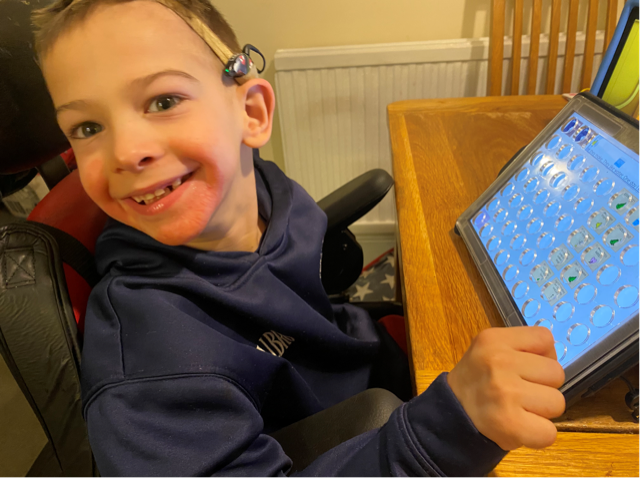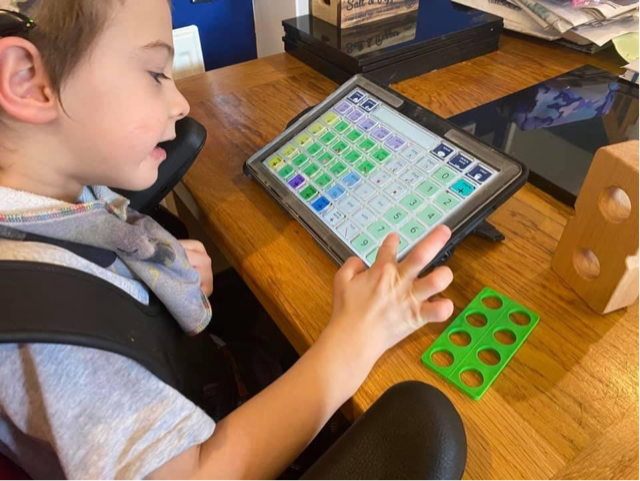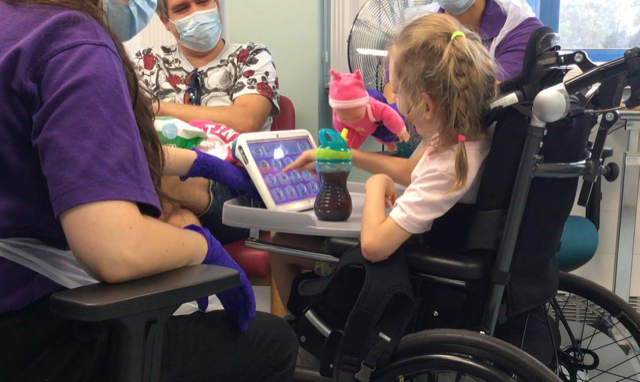The miracle technology of how I and others communicate without having a voice

By Ellise Hollie Hayward, 21, Disabilities Correspondent, Jill Dando News
Can you imagine not having a voice? Not being able to communicate your thoughts and feelings? This is the case for many who are born with or acquire conditions that cause speech difficulties.
To support communication, many people use AAC - just like I do.
AAC stands for augmentative and alternative communication and refers to communication strategies and tools used by people with speech difficulties. This includes signing, paper based symbols and powered communication aids which convert text or symbols into electronic speech.

NHS England fund 14 specialised AAC services to provide AAC to those with the most complex communication difficulties (criteria). AAC West of England Specialist Team (AAC WEST) are part of North Bristol NHS Trust, and cover the South West of England. The team is made up of Speech Therapists, Occupational Therapists, Education Advisors and Assistant Practitioners, and carry out AAC assessments with local Speech Therapists. We trial different AAC with people to find the right set up and the best way for people to access a communication aid, for example through a switch, eye gaze technology or a head mouse.
DON'T MISS: https://goodnewspost.co.uk/inspirational-izzy-11-completes-an-epic-20-mile-walk-for-charity/
“The silence of speechlessness is never golden. We all need to communicate and to connect with each other. It is a basic need, a basic human right,” Bob Williams (expert AAC User).
AAC WEST see children and adults. One little boy was described as ‘very content, never complains and happy with whatever you give him.’ But after having his communication aid for a few weeks he stared voicing his opinions. In his final appointment he used his AAC to say that he was bored and wanted to go, all with a big smile on his face! The team were delighted!

AAC WEST recently provided an eye gaze device to a man with MND and his wife has described it as a “complete lifeline”. They told us how one of his friends was nervous about seeing him, but his wife reassured the friend that he’s still the same person, but uses an eye gaze device to communicate. The friend visited and they said it was like old times!
But “having an AAC device does not make you an effective communicator anymore than having a piano makes you a musician” (Beukelman, 1991). It takes time and dedicated support to learn how to use a communication aid.
The best way for people to learn, especially children, is to see their communication aid being modelled. You can watch the AAC WEST Modelling AAC video to learn more about this.
Having AAC and the right support can give people with communication difficulties a voice to ROAR!
For more stories from Jill Dando News click: http://www.goodnewspost.co.uk




